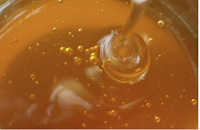 |
| Siona Karen via Flickr |
Last year,
Food Safety News reported that 1/3 or more of all honey consumed in the U.S. is likely smuggled in from China. Why should that concern us? Because the honey may be contaminated with lead and illegal antibiotics.
Millions of pounds of Chinese honey is shipped to the U.S. through India, flooding grocery store shelves and ending up in hundreds of different processed foods. This honey has been banned as unsafe in dozens of countries; the European Union banned all shipments of honey from India beginning in June of 2010 because of the presence of lead and illegal animal antibiotics.
What's more, as reported in
this article, more than 3/4 of the honey sold in major grocery chain stores (including Giant Eagle) and big box chain stores isn't honey at all. It has been "ultra-filtered" so that it no longer contains pollen. Most of the world's food safety agencies, including the U.S. Food and Drug Administration, have ruled that any product that no longer contains pollen isn't honey. However, the FDA does not inspect honey sold in the U.S. to determine whether in fact it does contain pollen.
Why would pollen be removed from honey? Pollen is the only foolproof way to identify the source of honey. Without it, there is no way to determine whether the honey came from legitimate and safe sources.
The California advocacy group, Center for Environmental Health, found high levels of lead in honey purchased from 3 different grocery stores in the Bay Area and Southern California. The honey had between 1.5 to over 2 times the legal limit of lead. On May 2, the group
filed lawsuits against two grocery store chains, alleging violations of a California law which limits lead in consumer products.
I take all this as a very strong argument to stay away from any honey unless you can verify its source. The best way to do that is to buy local honey from one of the growing number of local beekeepers. I have purchased local honey from beekeepers at the Mt. Lebanon Farmer's Market, which opened for the season last Saturday, as well as the Farmers@Firehouse market in the Strip District, which opens later this month. Other places to look for local honey: Whole Foods in East Liberty, the Pittsburgh Public Market in the Strip, the East End Food Co-op and Sunny Bridge Natural Foods in McMurray.
This article published last fall in Pittsburgh Magazine lists some other sources of local honey.
